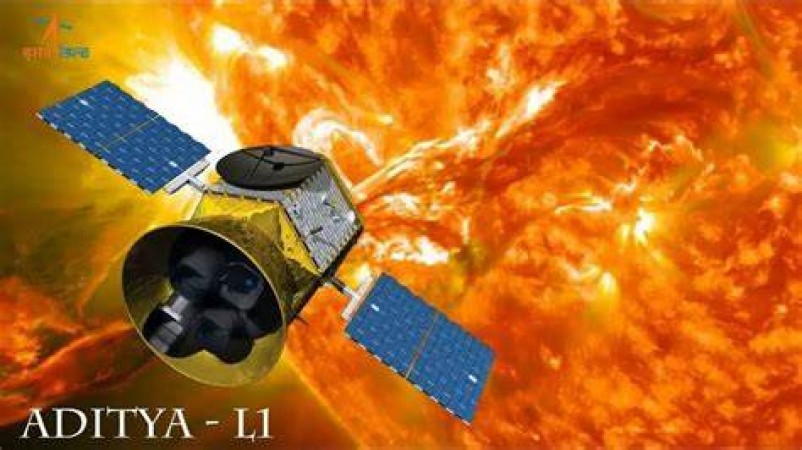
On September 2, 2023, the Indian Space Research Organisation (ISRO) achieved a significant milestone by successfully launching the Aditya L1 mission from the renowned Satish Dhawan Space Centre, situated in Sriharikota, India. This momentous mission seeks to unravel the long-standing mysteries of the Sun's environment and its profound influence on our planet, Earth.
For this critical mission, ISRO selected the dependable Polar Satellite Launch Vehicle (PSLV-C57 rocket) as the launch vehicle. The PSLV-C57, renowned for its consistent and reliable performance, was entrusted with carrying seven invaluable payloads onboard, all dedicated to the comprehensive study of the Sun.
The Aditya L1 mission is strategically divided into five distinct phases, each meticulously planned to propel the spacecraft closer to its ultimate destination - the Lagrange point 1 (L1). The L1 point is a unique location in space where the gravitational forces of the Sun and Earth are in perfect equilibrium.
Anticipation and excitement are building as ISRO sets its sights on the next significant milestone, scheduled for September 15. This pivotal event will mark another crucial manoeuvre in Aditya L1's journey, solidifying India's position as a pioneering force in the field of space exploration.
Just after the landing of the Chandrayaan-3 lander to study the Moon, ISRO wasted no time in launching another ambitious mission - Aditya L1. This mission is laser-focused on studying the Sun and its profound effects on space weather, which, in turn, significantly impact Earth.
At present, Aditya-L1 finds itself on a four-month-long expedition, cruising through the cosmos on its path to the Earth-sun system. This journey is not just a mere voyage; it's a quest for knowledge and discovery on an astronomical scale.
Recently, the spacecraft achieved a remarkable milestone by successfully executing its third manoeuvre. This precise manoeuvre transitioned the spacecraft to a new orbit at 296 km x 71767 km, bringing it closer to its ultimate destination.
Following the upcoming manoeuvre scheduled for September 15, Aditya-L1 will undertake a final shift in its trajectory as it journeys toward the Sun's Lagrange point 1 (L1). If this ambitious goal is realized, India will make history by becoming one of the few nations to enter the Sun's orbit.
As Aditya L1 moves further away from Earth, it will eventually exit the Sphere of Influence (SOI), escaping Earth's gravitational pull. Once this milestone is achieved, the spacecraft will transition into the cruise phase. During this phase, it will be placed into a large halo orbit around Lagrange point 1 (L1).
The Aditya-L1 mission, as a successor to Chandrayaan-3, holds the promise of providing invaluable insights into our closest star, the Sun. Its mission is to comprehensively study the Sun's intricate characteristics and its profound impact on space weather, which, in turn, has a substantial influence on Earth.
The objectives of the Aditya-L1 mission are as vast as the cosmos itself. They encompass gaining a comprehensive understanding of the Sun's chromospheric and coronal heating processes. Moreover, the mission is set to delve into the study of partially ionized plasma, the formation of coronal mass ejections, and the enigmatic nature of solar flares.
The mission is armed with seven specialized payloads, each meticulously designed to explore different layers of the Sun. These payloads promise to unlock a treasure trove of information about our star, with real-time data collection, especially from the outermost layer - the coronal layer.
In addition to these extensive objectives, Aditya-L1 will play a crucial role in scrutinizing the formation and composition of solar wind and space weather. This mission carries the weighty responsibility of providing early warnings when solar winds change direction and approach Earth at speeds exceeding a staggering 600 km/sec.
As Aditya L1 progresses into the cruise phase, leaving Earth's gravitational pull far behind, it will find its rightful place in a large halo orbit around the Lagrange point 1. This monumental mission holds the potential to revolutionize our understanding of our closest star, the Sun, and the intricate relationship it shares with our planet, Earth.
In a world driven by curiosity and scientific exploration, Aditya L1 stands as a shining testament to India's prowess in space research and its unwavering commitment to unraveling the enigmas of the universe. As this mission unfolds, it promises to rewrite the textbooks of solar science and deepen our appreciation of the celestial forces that shape our existence.
How to Join the Indian Army: A Comprehensive Guide for Students
Empowered Journey: Aisshwarya Deshmukkh, Mrs. Asia Pacific 2023
Coinbase Ceases Operations in India: What's the Next Steps for Customers